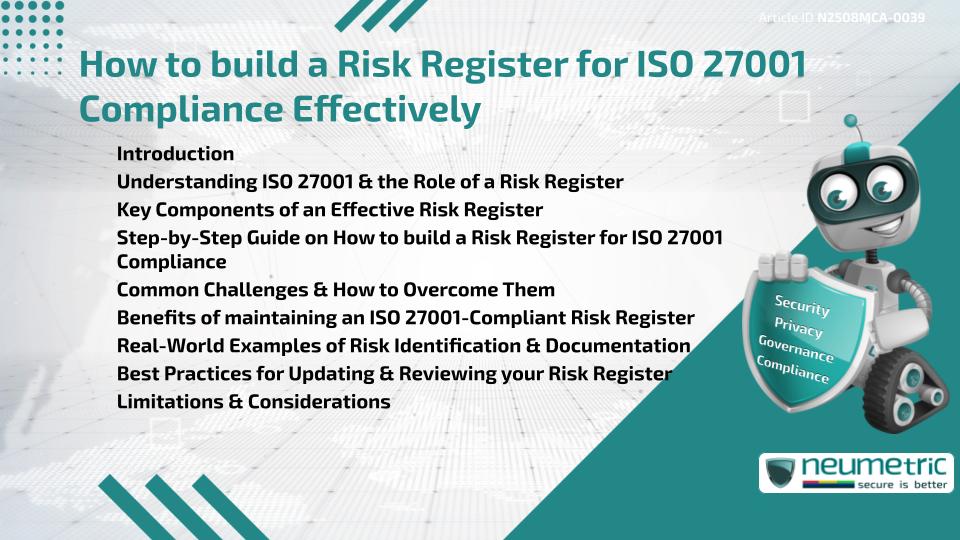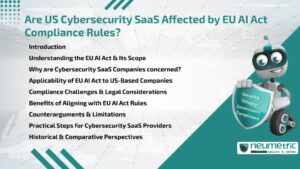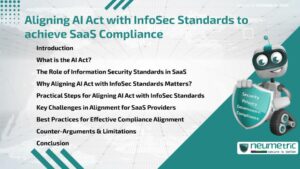Table of Contents
ToggleIntroduction
Creating & maintaining a proper Risk register is a core part of achieving & sustaining ISO 27001 compliance. It helps organisations systematically identify, assess & manage Information Security Risks, ensuring they meet the requirements of the Information Security Management System [ISMS]. This article explains how to build a Risk register for ISO 27001 compliance effectively, covering its purpose, essential elements, common pitfalls & Best Practices. You will also learn how a well-structured register can support decision-making, improve security posture & provide evidence during audits.
Understanding ISO 27001 & the Role of a Risk Register
ISO 27001 is the leading international Standard for managing Information Security Risks. A Risk register is essentially a central log that records identified Threats, Vulnerabilities, likelihood & potential impact. It also documents the mitigation measures in place & the status of those measures. Think of it as the backbone of your organisation’s Risk Management Framework — without it, you cannot prove a systematic approach to handling Risks.
A well-maintained Risk register ensures you comply with ISO 27001’s Risk Assessment & treatment clauses, providing both structure & traceability. For a deeper understanding of ISO 27001’s core requirements, see the official ISO.org resource.
Key Components of an Effective Risk Register
An ISO 27001 Risk register should contain:
- Risk ID: A unique identifier for tracking.
- Description: Clear explanation of the Risk.
- Likelihood: Probability of occurrence.
- Impact: Potential damage if the Risk materialises.
- Risk Owner: The individual responsible for managing it.
- Mitigation Measures: Controls or processes to reduce Risk.
- Residual Risk: Level of Risk after treatment.
- Status: Current progress in addressing the Risk.
You can find a practical example of these elements on the IT Governance guide.
Step-by-Step Guide on How to build a Risk Register for ISO 27001 Compliance
- Identify Information Assets – Start with a complete inventory of data, systems & processes.
- Determine Threats & Vulnerabilities – Use brainstorming sessions, incident history & Threat Intelligence sources.
- Assess Risks – Evaluate the Likelihood & Impact, using a consistent scoring method.
- Document in the Register – Input findings into your chosen format (spreadsheet, GRC tool or ISMS software).
- Plan Treatment – Decide whether to mitigate, transfer, accept or avoid the Risk.
- Assign Ownership – Ensure each Risk has a clearly defined responsible party.
- Review & Approve – Senior Management should review the register to confirm alignment with organisational objectives.
Common Challenges & How to Overcome Them
- Incomplete Asset Lists – Use multiple sources & departments to ensure nothing is missed.
- Subjective Risk Scoring – Define criteria clearly to ensure consistency.
- Poor Engagement – Provide training so Stakeholders understand their role in Risk Management.
- Outdated Registers – Implement regular review cycles to keep data current.
Benefits of maintaining an ISO 27001-Compliant Risk Register
- Facilitates informed decision-making.
- Provides evidence during audits.
- Improves communication between departments.
- Demonstrates commitment to Data Protection & security.
- Supports Continuous Improvement of the ISMS.
Real-World Examples of Risk Identification & Documentation
- Phishing Attacks – Likelihood: high, Impact: medium, Mitigation: Employee Training, email filtering.
- Server Downtime – Likelihood: medium, Impact: high, Mitigation: redundancy, regular maintenance.
- Data Leakage via USB – Likelihood: low, Impact: high, Mitigation: endpoint security, policy enforcement.
Best Practices for Updating & Reviewing your Risk Register
- Review quarterly or after significant changes in operations or Threats.
- Incorporate feedback from internal audits.
- Keep it accessible to relevant staff but control editing rights.
- Align with external frameworks for broader coverage, such as NIST’s Risk Management Framework.
Limitations & Considerations
While a Risk register is a vital Compliance Tool, it is not a guarantee against incidents. Risks can change quickly & even the best register is only as good as its last update. Additionally, overly complex registers can discourage consistent use. Aim for clarity & practicality over exhaustive detail.
Takeaways
- A Risk register is central to ISO 27001 compliance.
- The process involves asset identification, Threat assessment, documentation & regular review.
- Clear criteria & Stakeholder engagement are essential for success.
- The register must be maintained actively to remain relevant.
FAQ
What is the main purpose of a Risk register in ISO 27001?
It records, tracks & manages Information Security Risks in line with ISO 27001 requirements.
How often should I review my Risk register?
At least once every quarter or after significant operational or Threat changes.
Can I use a spreadsheet for my Risk register?
Yes, but specialised ISMS software offers better automation & tracking features.
Who should own the Risk register?
Typically, the ISMS manager or equivalent Information Security lead.
What happens if I do not maintain my Risk register?
You Risk non-compliance with ISO 27001, which can lead to failed audits & Security Incidents.
Does the Risk register need to be shared with all staff?
It should be accessible to relevant Stakeholders but editing rights should be controlled.
Is qualitative or quantitative Risk Assessment better for ISO 27001?
A hybrid approach often works best, balancing clarity with measurable data.
Need help for Security, Privacy, Governance & VAPT?
Neumetric provides organisations the necessary help to achieve their Cybersecurity, Compliance, Governance, Privacy, Certifications & Pentesting needs.
Organisations & Businesses, specifically those which provide SaaS & AI Solutions in the Fintech, BFSI & other regulated sectors, usually need a Cybersecurity Partner for meeting & maintaining the ongoing Security & Privacy needs & requirements of their Enterprise Clients & Privacy conscious Customers.
SOC 2, ISO 27001, ISO 42001, NIST, HIPAA, HECVAT, EU GDPR are some of the Frameworks that are served by Fusion – a SaaS, multimodular, multitenant, centralised, automated, Cybersecurity & Compliance Management system.
Neumetric also provides Expert Services for technical security which covers VAPT for Web Applications, APIs, iOS & Android Mobile Apps, Security Testing for AWS & other Cloud Environments & Cloud Infrastructure & other similar scopes.
Reach out to us by Email or filling out the Contact Form…





